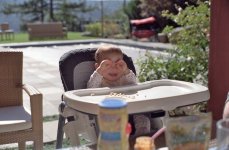TJV
Well-known
ferider said:I think there are three reasons:
- film vs. sensor flatness: film will bend inwards the film gate slightly. Which might cause a film-adjusted lens with very shallow DOF to back-focus on a digital camera, I guess. Obviously more in the center of FOV.
- it is much, much easier with a digital camera to test a lens. And, the Noctilux has become much more popular with the M8. I think some of the issues discovered today with the M8 existed in the past but remained undiscovered.
- with the crop factor, the DOF decreases. That is, you are effectively dealing with 65/f1.0 and 100/f1.4 lenses on the M8 when considering Noctilux and 75 Summilux. Harder to focus on M8. I would guess that many Nocti and 75 Summilux film users used .85 or .91 viewfinders, before the M8 hit the market.
I don't think film thickness is important.
Best,
Roland.
I see you bet me too the post! Slightly different points but you've touched upon my idea of the crop factor. I guess it's a bit like the DOF markings of lenses - they aren't accurate with 35mm film to the extent they were with 8x10" plates because you're enlarging and therefore emphasing any otherwize negligible focus errors whey you take the 35mm neg to the equivelent 8x10" size. Don't think I'm making myself clear, hope I'm understood?


